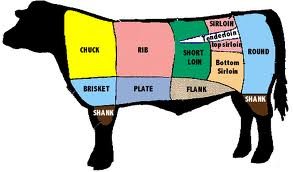TheAlfheim
Assistant Cook
Hi All,
I have a fairly simple question, and I'm hoping some of the more experienced members here can help shed some light. In a nutshell;
Why would someone buy a butchers knife?
There's a butcher near me that allows me to economically buy large sections of beef, and from that cut my own steaks. Ive done this once with my 8 inch chefs knife. This seemed to work moderately well, which leads me to my question. Is a butchers knife, with its different blade shape, better suited to this task? Or will a sharp chefs knife do just as well?
Thanks!
I have a fairly simple question, and I'm hoping some of the more experienced members here can help shed some light. In a nutshell;
Why would someone buy a butchers knife?
There's a butcher near me that allows me to economically buy large sections of beef, and from that cut my own steaks. Ive done this once with my 8 inch chefs knife. This seemed to work moderately well, which leads me to my question. Is a butchers knife, with its different blade shape, better suited to this task? Or will a sharp chefs knife do just as well?
Thanks!

